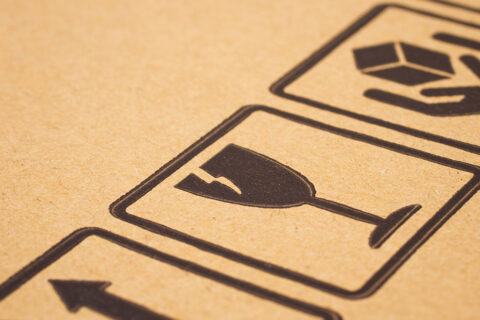We have the answers to these questions (except the energy drink one) and more. Here’s everything you need to know about how to transport liquids safely and effectively:
Will professional movers move my liquids?
Yes, but not all of them. Ideally, you should move as few liquids as possible. They’re usually heavy, unwieldy and pose a higher risk for accidents or spills than other transportable items. Most moving companies will move most liquids, though different companies may have different rules. Exactly which items can or cannot be moved depends on the particular professional moving company that you’re working with. Here’s a list of things that most companies will not move:
- Anything contained within an aerosol can
- Fire extinguishers
- Cleaning chemicals like bleach, ammonia, and other solvents
- Paints, varnishes, and stains
- Photography chemicals, like those used in darkrooms
- Gasoline, kerosene, fuel, propane, and oils
- Rat poison and pesticides
- Home goods like fertilizer, pool chemicals, or weed killer
How do I dispose of hazardous liquids?
Now that you know which liquids you shouldn’t move, you have to figure out how to dispose of them. One thing you should never, ever do is pour hazardous liquids down the drain. Pouring hazardous liquids down your drain could introduce them to your local water supply and cause serious problems. Customarily, there are three safe ways to dispose of hazardous liquids:
- find a drop-off facility
- contact a waste management company to pick them up
- recycle them
You can find information about hazardous waste drop-off facilities via your local government website. You could also find and contact a local disposal company online. The company that handles your normal garbage probably has the resources to handle your hazardous waste if you contact them about it.
Recycling your hazardous waste is the most flexible option of all, but you might have to get a little creative. What recycling will entail for you depends on the material you’re attempting to dispose of. You could call local schools or volunteer programs to see if they need extra paint. You could contact local auto garages to ask if they want your spare car fluids. Different kinds of outreach programs or charities may need cleaning supplies. Try looking up companies that are asking for your material online and go from there.
How should I pack liquids for moving?
Packing liquids is easy. All you need to do is take a little extra time to secure all of your liquids make sure you’ve grouped them together. Throw away any non-hazardous liquids that you haven’t used in the last six months, that have expired, or that are nearly empty. Group all of the liquids you’re not throwing away together, separating by type. Don’t pack your shampoo with your toilet cleaner, for instance, but do pack your olive oil with your pasta sauce.
Next, take the cover or cap off of every liquid container, cover the opening with plastic wrap, and then replace the cover. Then, wrap the entire container in plastic wrap. When you’re finished, tape each container together by type. Place each type of container in a plastic moving box upright. Try to keep the liquids from bouncing around inside the box as much as possible, but don’t pack them in so tightly that they might break. Label each box clearly so you can tell where the liquids are when it’s time to unpack. Handle any boxes containing liquids especially carefully, and don’t tip them over or rotate them.
Obviously, moving liquids isn’t ideal. If you have the opportunity to leave liquids behind, you should. Unfortunately, however, that won’t always be possible or preferable. If you absolutely have to transport liquids during your move, do some research and consider contacting professional help. The experts at Bekins can help you move your liquids safely and effectively. Get an estimate today!


